A Modified Differential Coherent Bit Synchronization Algorithm for BeiDou Weak Signals with Large Frequency Deviation
Abstract
:1. Introduction
2. Signal Model and Conventional Algorithm Analysis
2.1. Signal Model
2.2. Maximum Likelihood Bit Synchronization Method
2.3. Influence Factors Analysis
3. Proposed Differential Coherent Bit Synchronization Algorithm
3.1. Differential Coherent Algorithm
3.2. Differential Coherent Bit Synchronization Algorithm
4. Simulation Results and Analysis
4.1. Monte Carlo Simulations
- (1)
- Position and velocity of satellites are resolved based on stored ephemeris parameters.
- (2)
- The time delay variable is calculated according to the position and velocity of satellites and the trace.
- (3)
- On the basis of BeiDou signal structure, carrier, ranging code and NH code are generated.
- (4)
- The BeiDou IF signal is generated according to the time delay variable and signal modulation.
- (5)
- Additional white Gaussian noise is generated according to the CN0 settings.
- (6)
- Every sampled point of the signal is quantized and stored in two bits.
4.2. Real Data Tests
5. Conclusions
Acknowledgments
Author Contributions
Conflicts of Interest
References
- Zhao, L.; Liu, A.; Ding, J.; Wang, J. BeiDou Signal Acquisition with Neumann–Hoffman Code Modulation in a Degraded Channel. Sensors 2017, 17, 323. [Google Scholar] [CrossRef] [PubMed]
- Yan, K.; Ziedan, N.I.; Zhang, H.; Guo, W.; Niu, X.; Liu, J. Weak GPS signal tracking using FFT discriminator in open loop receiver. GPS Solut. 2016, 20, 225–237. [Google Scholar] [CrossRef]
- Xie, P.; Petovello, M.G. Improved Correlator Peak Selection for GNSS Receivers in Urban Canyons. J. Navig. 2015, 68, 869–886. [Google Scholar] [CrossRef]
- Wang, X.; Ji, X.; Feng, S.; Calmettes, V. A high-sensitivity GPS receiver carrier-tracking loop design for high-dynamic applications. GPS Solut. 2015, 19, 225–236. [Google Scholar] [CrossRef]
- Wang, X.; Ji, X.; Feng, S. A scheme for weak GPS signal acquisition aided by SINS information. GPS Solut. 2014, 18, 243–252. [Google Scholar] [CrossRef]
- Wang, L.; Groves, P.D.; Ziebart, M.K. Smartphone shadow matching for better cross-street GNSS positioning in urban environments. J. Navig. 2015, 68, 411–433. [Google Scholar] [CrossRef]
- Trajkovski, K.K.; Sterle, O.; Stopar, B. Sturdy positioning with high sensitivity GPS sensors under adverse conditions. Sensors 2010, 10, 8332–8347. [Google Scholar] [CrossRef] [PubMed]
- Shanmugam, S.K. New Enhanced Sensitivity Detection Techniques for GPS L 1 C/A and Modernized Signal Acquisition. Ph.D. Thesis, Departement of Geomatics Engineering, The University of Calgary, Calgary, AB, Canada, 2008. [Google Scholar]
- Gernot, C. Development of Combined GPS L1/L2C Acquisition and Tracking Methods for Weak Signals Environments. Ph.D. Thesis, Departement of Geomatics Engineering, The University of Calgary, Calgary, AB, Canada, 2011. [Google Scholar]
- Zhang, P.; Xu, C.; Cai, X.; Li, H. Performance analysis of BDS for regional services with consideration on weighted factors. Proc. Inst. Mech. Eng. Part G 2016, 230, 146–156. [Google Scholar] [CrossRef]
- Zou, D.; Deng, Z.; Huang, J.; Liu, H.; Yang, L. A study of Neuman Hoffman Codes for GNSS Application. In Proceedings of the 2009 WiCom’09 5th International Conference on Wireless Communications, Networking and Mobile Computing, Beijing, China, 24–26 September 2009; pp. 1–4. [Google Scholar]
- Bhuiyan, M.Z.H.; Söderholm, S.; Thombre, S.; Ruotsalainen, L.; Kuusniemi, H. Overcoming the challenges of BeiDou receiver implementation. Sensors 2014, 14, 22082–22098. [Google Scholar] [CrossRef] [PubMed]
- Ward, P.W.; Betz, J.W.; Hegarty, C.J. Satellite signal acquisition, tracking, and data demodulation. Underst. GPS Princ. Appl. 2006, 5, 174–175. [Google Scholar]
- Parkinson, B.; Spilker, J.J.; Axelrad, P.; Enge, P. GPS: Theory and Applications 1996; Volumes 1 and 2, AIAA: Washington, DC, USA, 1996. [Google Scholar]
- Ziedan, N.I.; Garrison, J.L. Bit Synchronization and Doppler Frequency Removal at Very Low Carrier to Noise Ratio Using a Combination of the Viterbi Algorithm with an Extended Kalman Filter. In Proceedings of the 16th International Technical Meeting of the Satellite Division of The Institute of Navigation (ION GPS/GNSS 2003), Portland, OR, USA, 9–12 September 2003; pp. 616–627. [Google Scholar]
- Ren, T.; Petovello, M. An analysis of maximum likelihood estimation method for bit synchronization and decoding of GPS L1 C/A signals. EURASIP J. Adv. Signal Proc. 2014, 2014, 1–12. [Google Scholar] [CrossRef]
- Puga, G.L.; Roncagliolo, P.A.; Garcia, J.G. Multi-Millisecond GNSS Maximum Likelihood Bit Synchronization Method. In Proceedings of the Fifth International Conference on Advances in Satellite and Space Communications, Venice, Italy, 22–27 April 2013; pp. 34–39. [Google Scholar]
- Kokkonen, M.; Pietila, S. A New Bit Synchronization Method for a GPS Receiver. In Proceedings of the 2002 IEEE Position Location and Navigation Symposium, Palms Springs, CA, USA, 15–18 April 2002; pp. 85–90. [Google Scholar]
- Li, X.; Guo, W. Efficient differential coherent accumulation algorithm for weak GPS signal bit synchronization. IEEE Commun. Lett. 2013, 17, 936–939. [Google Scholar]
- Dengyun, L.E.I.; Weijun, L.U.; Zhang, Y.; Dunshan, Y.U. Balance Differential Coherent Bit Synchronization Algorithm for GNSS Receiver. IEICE Trans. Commun. 2015, 98, 1133–1140. [Google Scholar]
- Jan, S.S.; Tao, A.L. Comprehensive comparisons of satellite data, signals, and measurements between the BeiDou navigation satellite system and the global positioning system. Sensors 2016, 16, 689. [Google Scholar] [CrossRef] [PubMed]
- China Satellite Navigation Office. BeiDou Navigation Satellite System Signal in Space Interface Control Document Open Service Signal (Version 2.1). Available online: http://en.beidou.gov.cn/index.html (accessed on 18 November 2016).
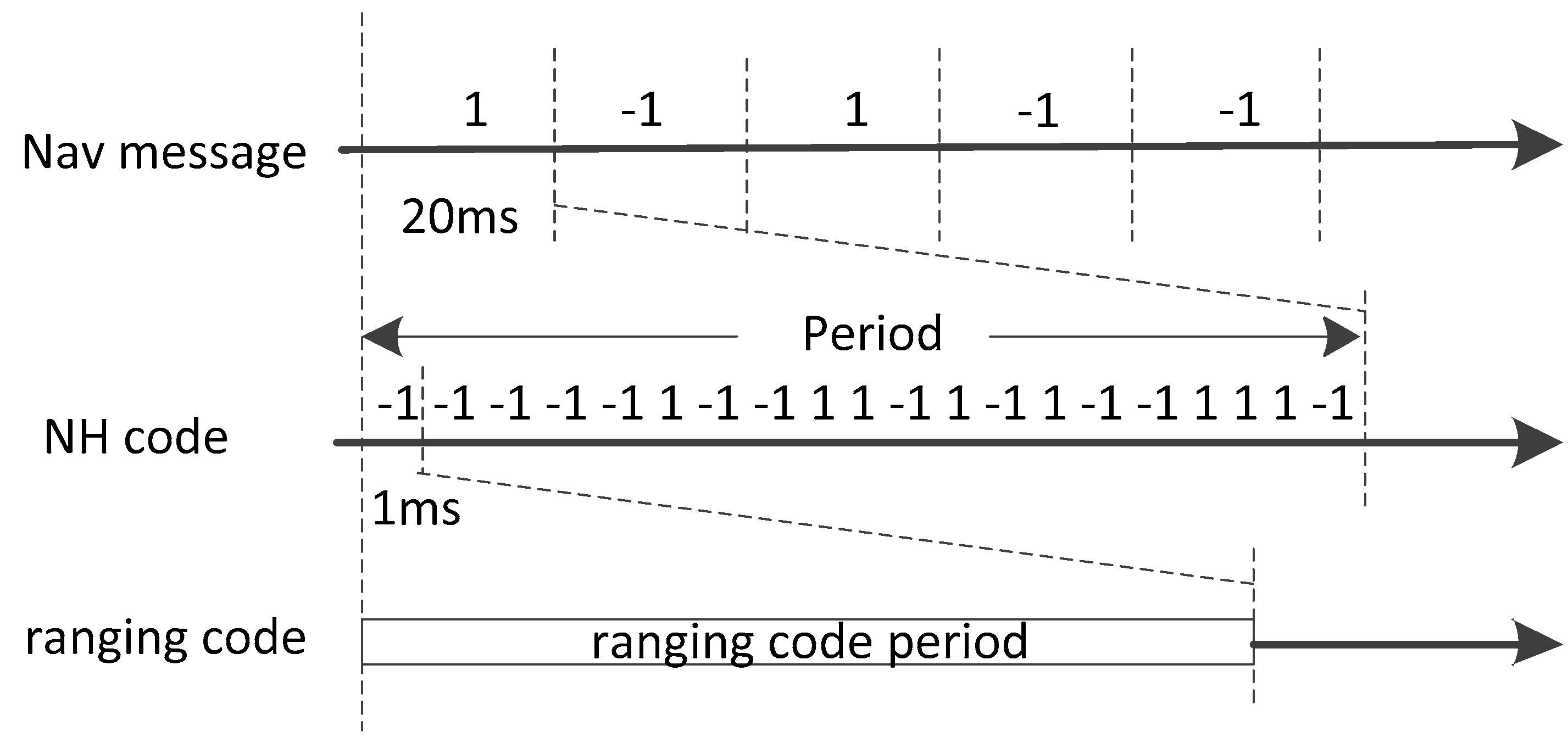
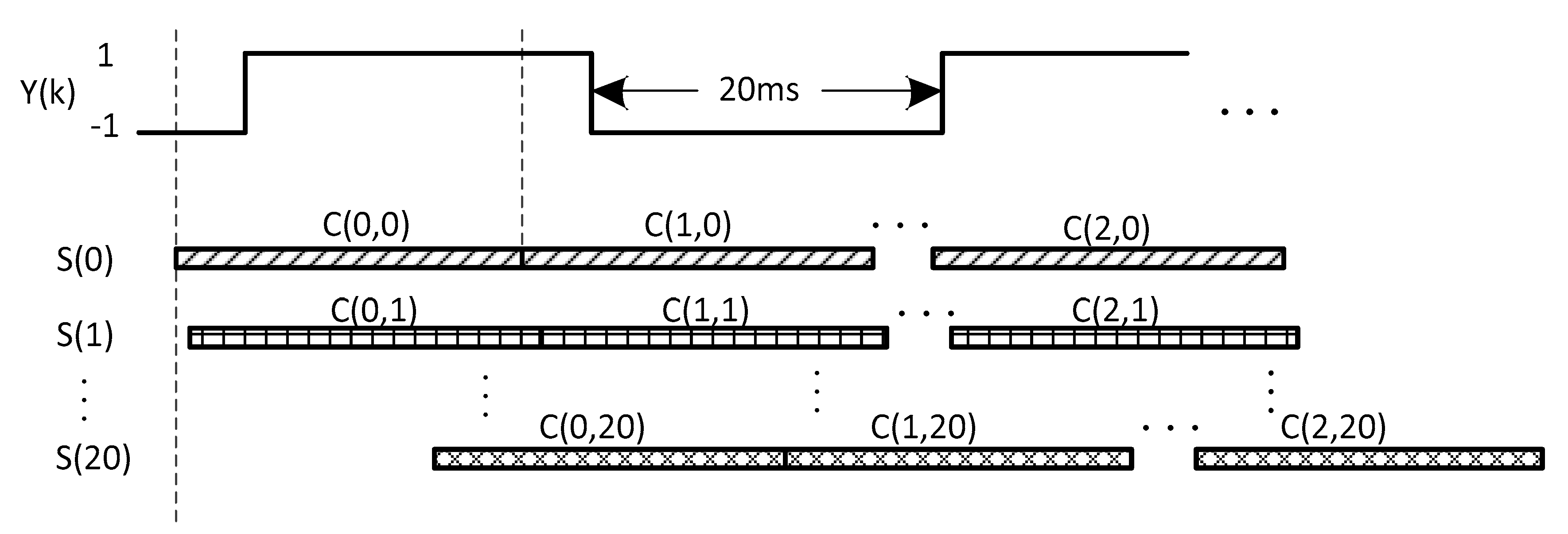
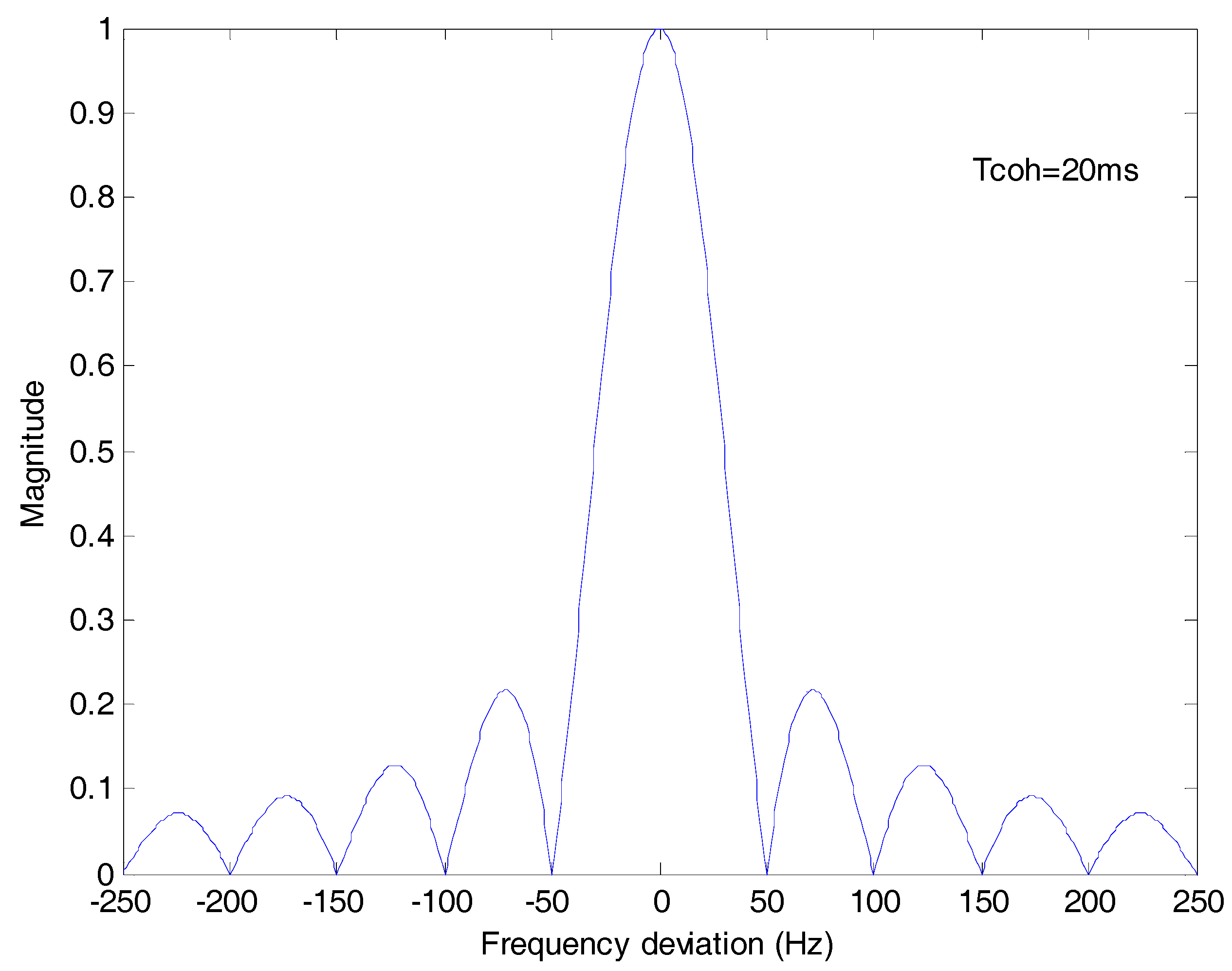
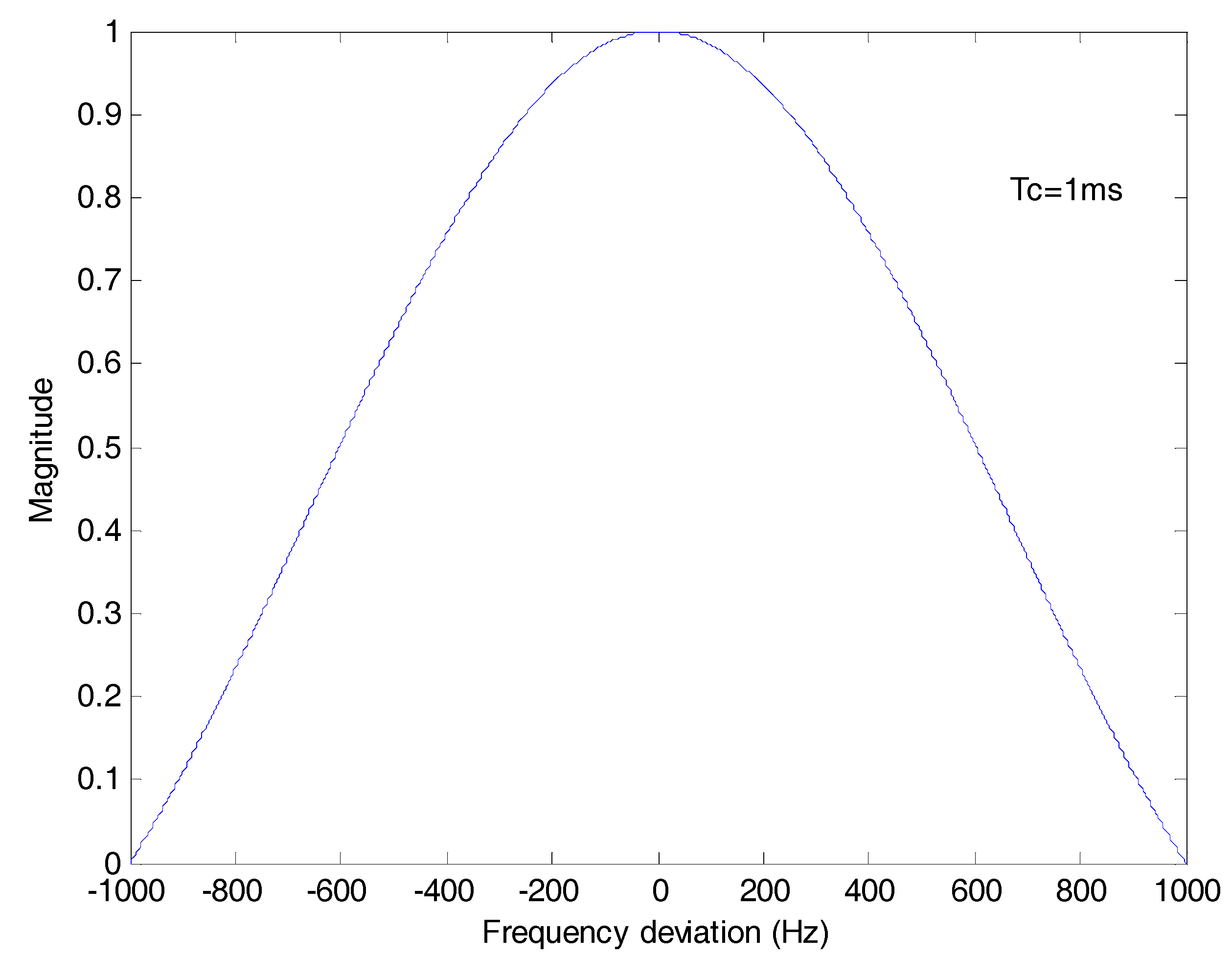

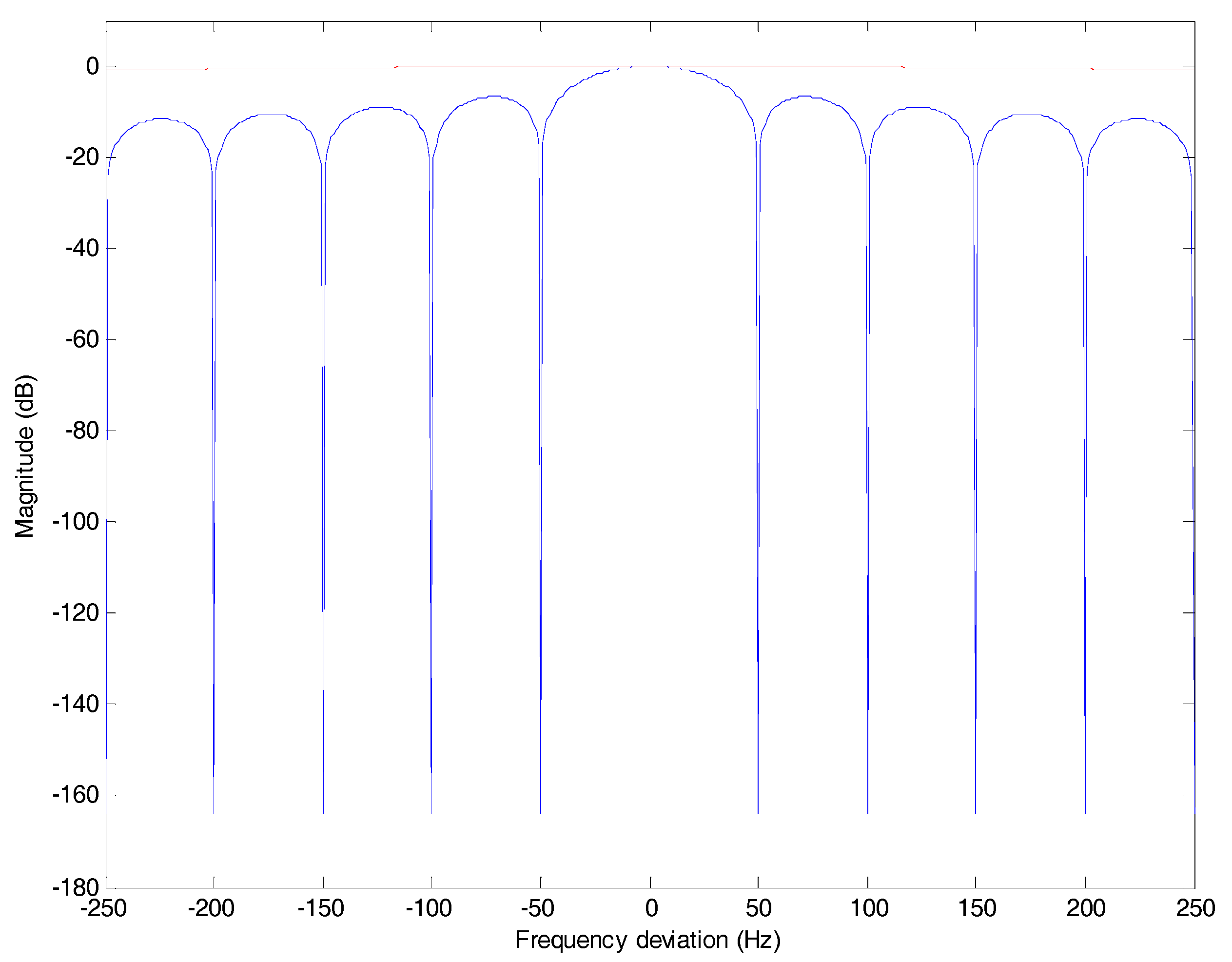

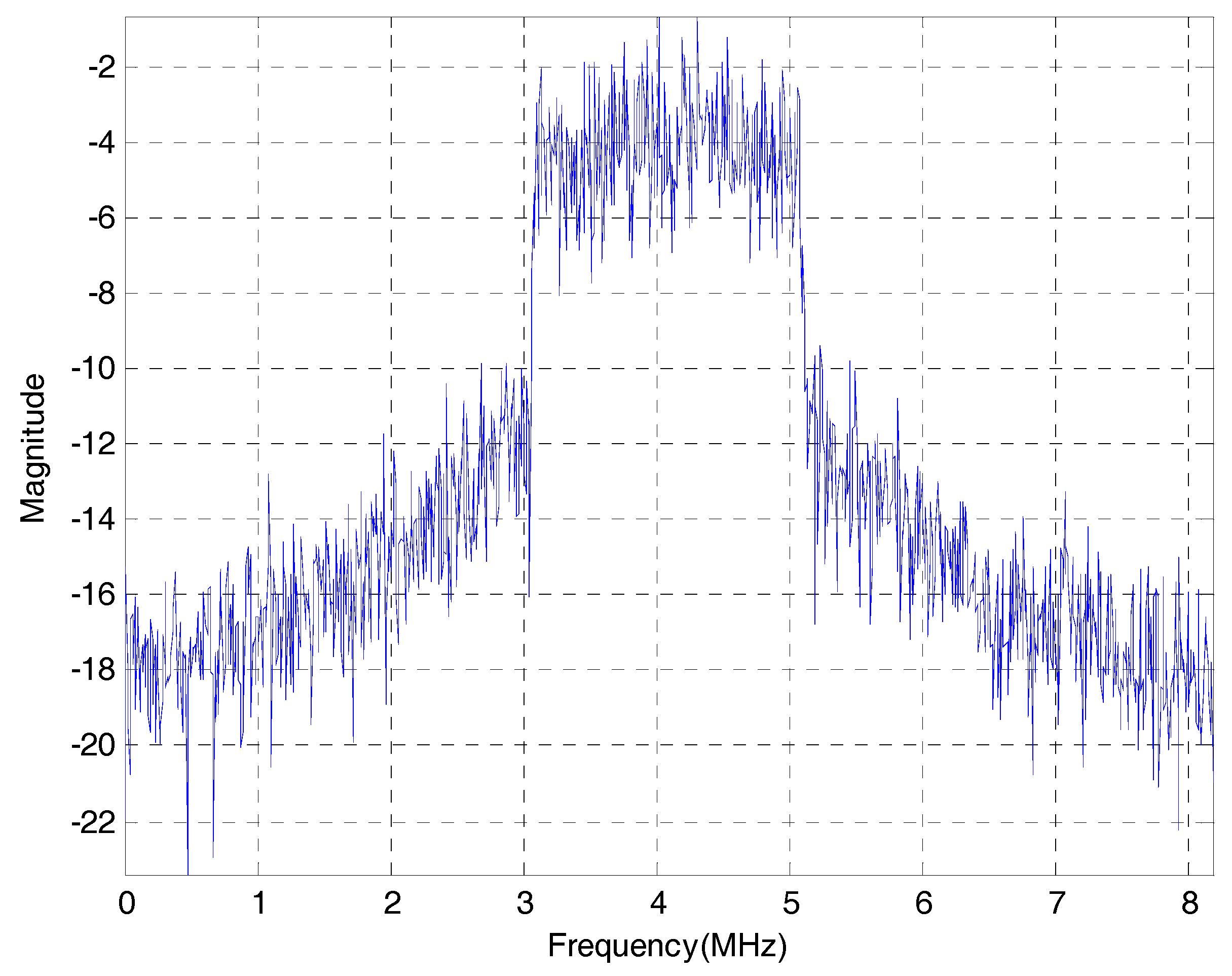
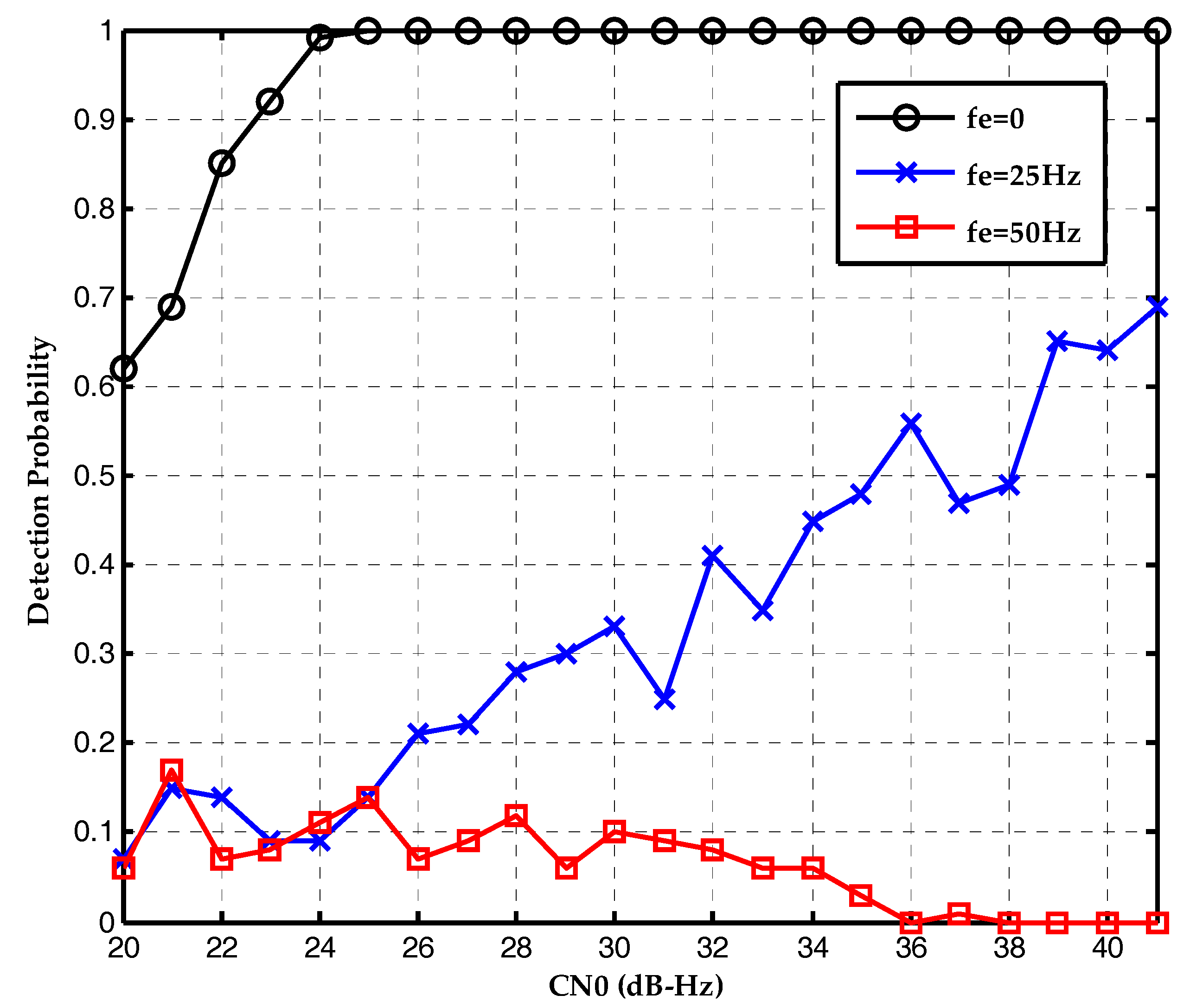

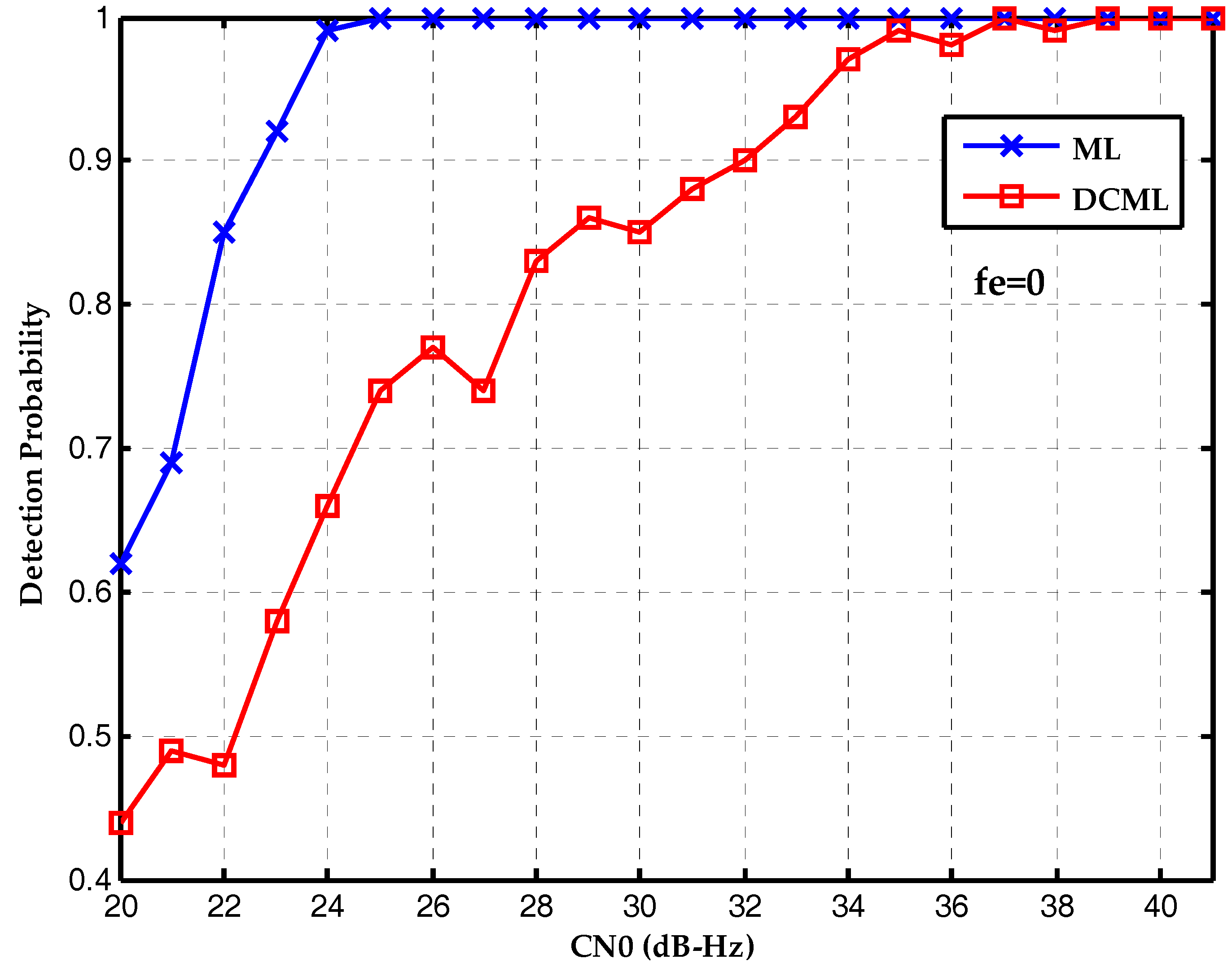
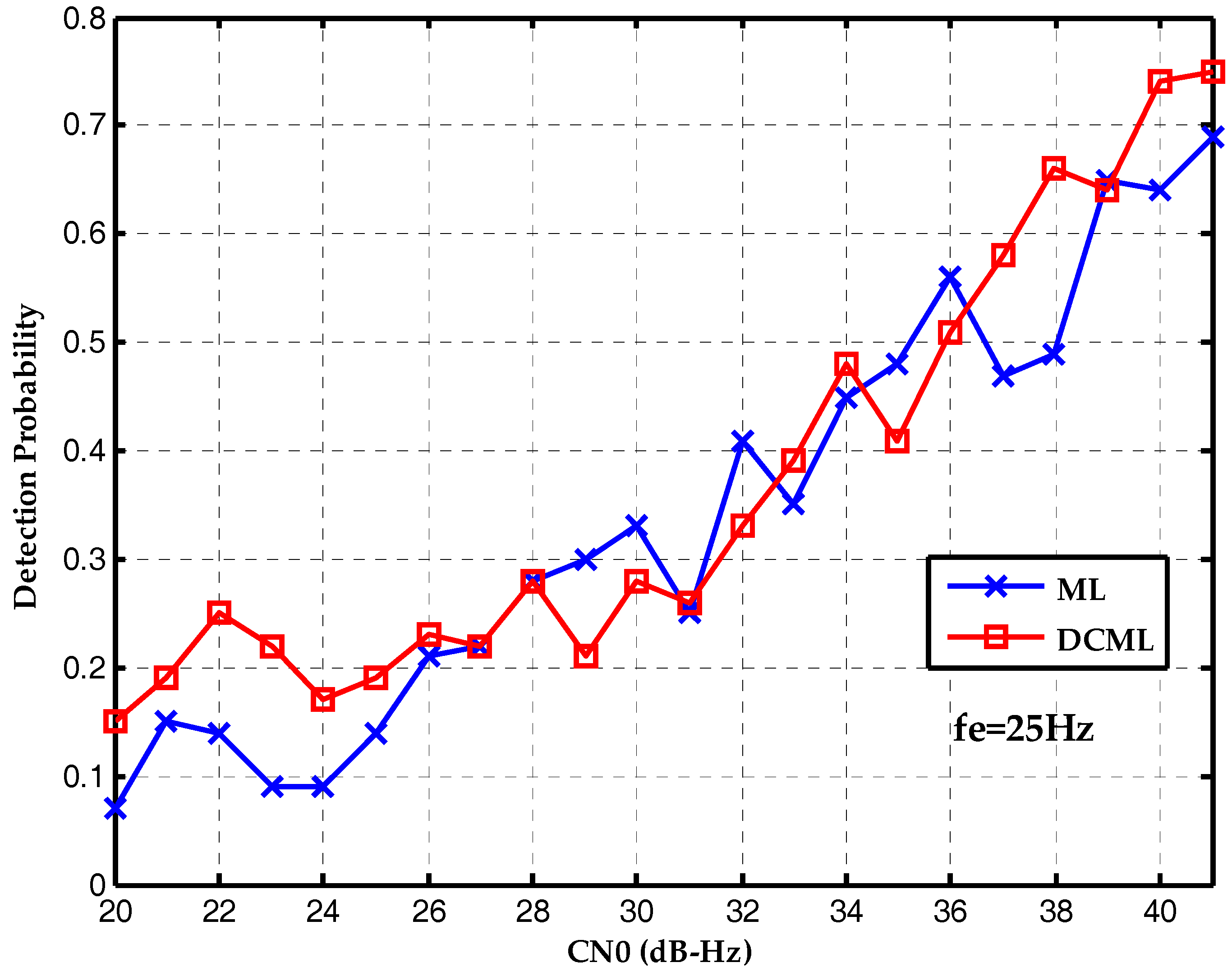



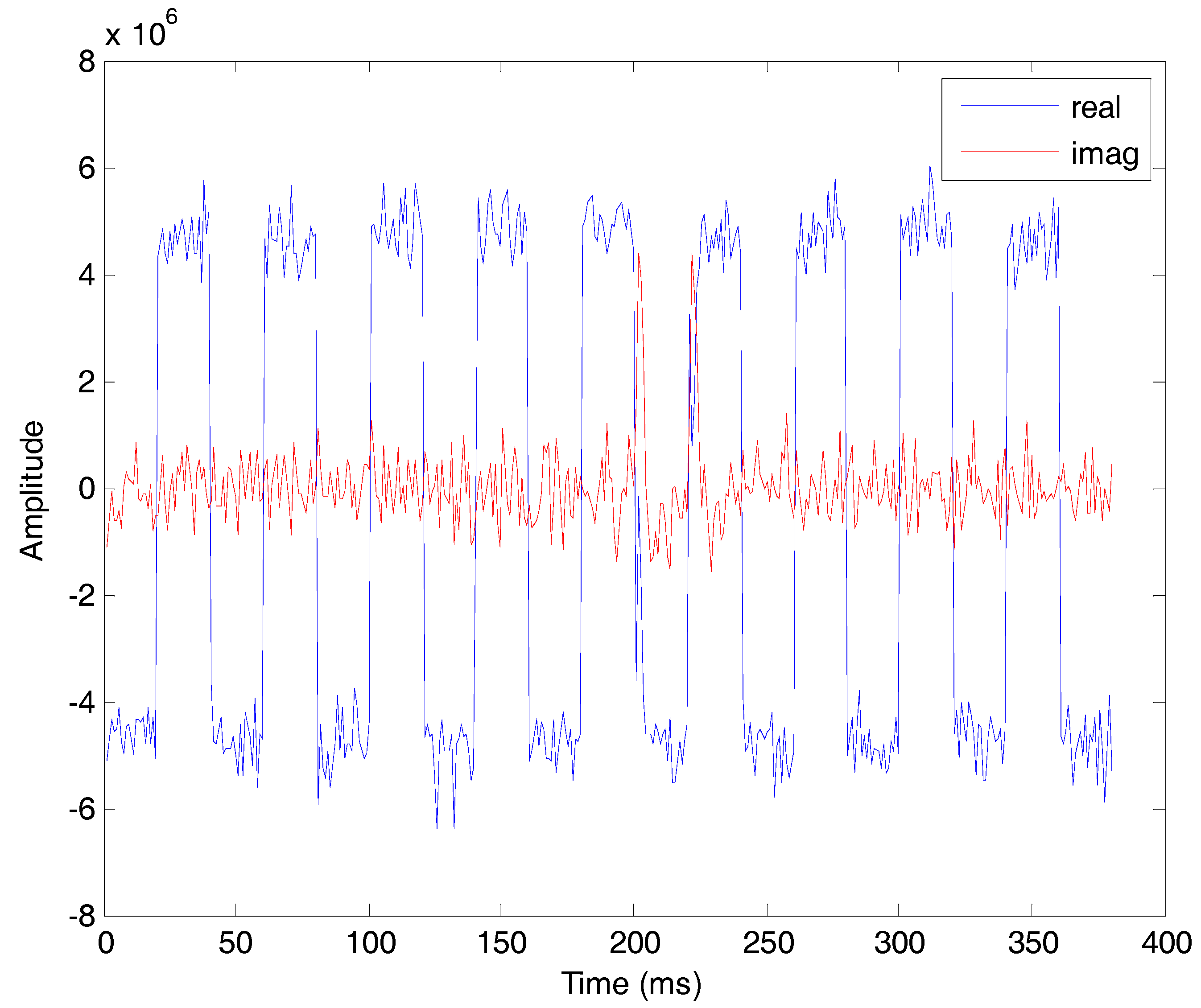
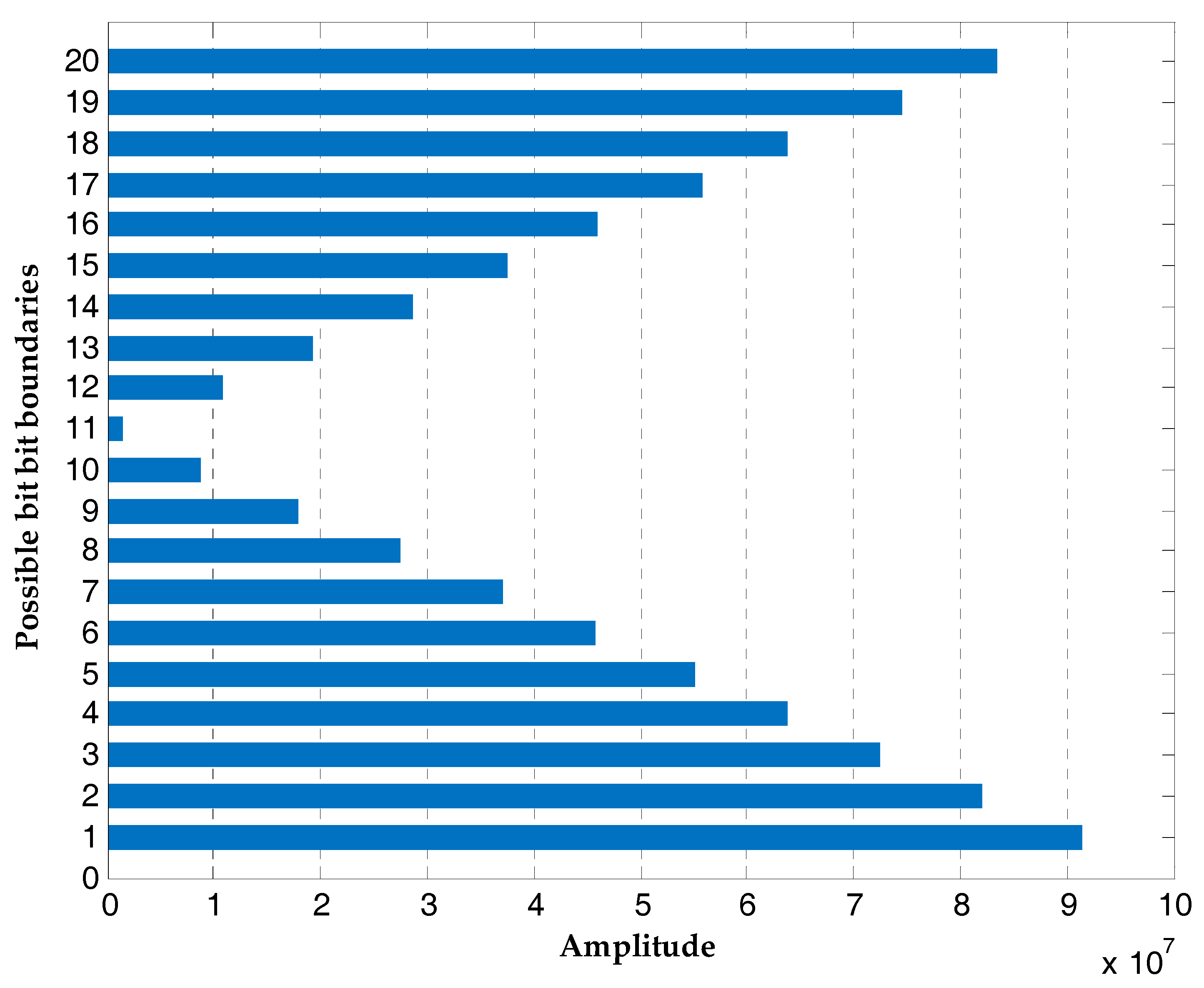
| Variable | Meaning |
|---|---|
| received IF signal | |
| carrier amplitude | |
| navigation data | |
| NH code | |
| ranging code | |
| sampling time | |
| carrier IF frequency | |
| Doppler frequency shift | |
| code propagation delay | |
| initial carrier phase | |
| locally generated signal | |
| ranging code phase of local signal | |
| carrier frequency shift of local signal | |
| Y(k) | output of the kth coherent integration |
| integration time | |
| the number of samples in the integration time | |
| autocorrelation function of the ranging code | |
| code phase estimation error | |
| Doppler frequency estimation error | |
| carrier phase estimation error | |
| window function | |
| cross-correlation between Y(k) and W(k) | |
| sum of the absolute values of cross-correlation | |
| estimate of the bit boundary | |
| coherent integration time | |
| Q(k) | differential coherent values |
| Z(k) | Differential coherent values with long delay time |
| Sections | Parameters | Values |
|---|---|---|
| Signal Generation | IF frequency | 4.1304 MHz |
| sampling frequency | 16.3676 MHz | |
| visible satellites | 6, 7, 11 and 12 | |
| CN0 | 20~40 dB-Hz | |
| Software Receiver | DLL bandwidth | 2 Hz |
| PLL bandwidth | 40 Hz | |
| frequency deviation | 0, 25, 50 Hz | |
| differential coherent delay time | 20 ms | |
| differential coherent integration time | 40 ms |
| Parameters | Values |
|---|---|
| IF frequency | 4.098 MHz |
| Sampling frequency | 62 MHz |
| DLL bandwidth | 5 Hz |
| PLL bandwidth | 20 Hz |
| FLL bandwith | 40 Hz |
| Differential coherent delay time | 20 ms |
| Differential coherent integration time | 40 ms |
© 2017 by the authors. Licensee MDPI, Basel, Switzerland. This article is an open access article distributed under the terms and conditions of the Creative Commons Attribution (CC BY) license (http://creativecommons.org/licenses/by/4.0/).
Share and Cite
Han, Z.; Liu, J.; Li, R.; Zeng, Q.; Wang, Y. A Modified Differential Coherent Bit Synchronization Algorithm for BeiDou Weak Signals with Large Frequency Deviation. Sensors 2017, 17, 1568. https://doi.org/10.3390/s17071568
Han Z, Liu J, Li R, Zeng Q, Wang Y. A Modified Differential Coherent Bit Synchronization Algorithm for BeiDou Weak Signals with Large Frequency Deviation. Sensors. 2017; 17(7):1568. https://doi.org/10.3390/s17071568
Chicago/Turabian StyleHan, Zhifeng, Jianye Liu, Rongbing Li, Qinghua Zeng, and Yi Wang. 2017. "A Modified Differential Coherent Bit Synchronization Algorithm for BeiDou Weak Signals with Large Frequency Deviation" Sensors 17, no. 7: 1568. https://doi.org/10.3390/s17071568





